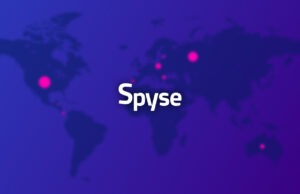The Basics Of Cybersecurity: Understanding The Threat Landscape

Cybersecurity headlines have been popping up more and more in recent years. Cybercriminals are stealing customer social security information from corporate computers.
Hackers who are fearless in stealing passwords and personal data from social media platforms or stealing corporate secrets from the cloud are a growing problem for businesses of all sizes.
What Is Cybersecurity?
Cybersecurity encompasses all technologies and processes that protect computer systems and electronic information. In a world where businesses and social life are increasingly online, cybersecurity is a vast and rapidly expanding area with a wide range of cybersecurity roles.
According to the CISA: Cybersecurity refers to the practice of safeguarding networks, devices, and data from unauthorized access or malicious use, as well as the practice of preserving the confidentiality, integrity, and accessibility of information.
What Is Information Security?
As defined by CISCO, information security is the security measures and technologies put in place and used to protect sensitive business information from being changed, interrupted, destroyed, or accessed.
The terms “information security” and “cybersecurity” are often used interchangeably, but according to CISCO, “information security is an essential component of cybersecurity, but it is primarily used to protect data.”
Computers and the internet connect everything, from communications to entertainment, transportation to shopping, medicine to more.
What Are Cyberattacks?
A cyberattack, as defined by IBM, is a malicious attempt to gain unauthorized access to a computer system to steal, expose, alter, disable, or eliminate information.
Crime-related attackers typically aim to make money by stealing money, stealing information, or causing disruption to a business, according to IBM. Crime-related attackers typically aim to make money by stealing money, stealing information, or causing disruption to a business, according to IBM. In a similar vein, personal attackers are former or current employees who take money or personal information to compromise a company’s systems.
What Are Some Types Of Cyberattacks And Threats?
Here is a list of the top cyberattack threats:
Malware:
Malware is also referred to as malicious software as defined by CISCO, malicious software is intrusive software designed by cybercriminals to gain unauthorized access to data or to cause damage to computers and systems.
Viruses, Worms, Trojans, Spyware, Adware, and Ransomware are some of the most common types of malware that can steal large amounts of information, according to CISCO.
Phishing:
According to CISCO, a phishing attack is a malicious communication that masquerades as legitimate. It’s usually done over email or the phone, according to CISCO, and the objective is to either steal sensitive information (e.g. financial or login details) or install malware on a target’s device.
Ransomware:
According to the CISA, ransomware is a type of malicious software that encrypts files on the target device and renders those files and the operating systems on which they depend unusable.
Once the system is encrypted, the criminals ask for a ransom in exchange for decrypting it, CISA said.
Viruses:
According to the SBA, a virus is a malicious program designed to infect computers and other connected devices. A virus’ primary purpose is to provide an attacker with access to infected systems, according to Proofpoint, and many viruses masquerade as legitimate applications before causing system damage, data loss, service disruption, or downloading additional malware.
Also Read: 5G Technology: The Key To Mobile App Development
What Are The Types Of Cybersecurity?
Here are some of the most common types of cybersecurity solutions available:
Application Security:
The term application security refers to the security measures that are built into applications during development to protect the data or code inside them from being stolen or hijacked, as per VMWare. Application security measures are designed to protect the application after development.
Cloud Security:
Cloud Security defines cloud security as “a collection of technologies and policies designed to protect cloud data, applications, and the cloud infrastructure from internal and external attack,” intending to prevent unauthorized access and ensure overall cloud data security.
Infrastructure Security:
Critical infrastructure security (CISA) refers to the physical and cyber infrastructure that is so critical to the functioning of society that its failure would have a catastrophic effect on our physical, financial, or public health.
Internet Of Things (IoT) Security:
The Internet of Things (IoT) refers to any device that can be connected to the internet and any other connected devices. According to IBM, the Internet of Things is a network of interconnected things and people that all share information about how they are being used and their environments.
Network Security:
CISCO defines network security as “the safeguarding of network infrastructure against unauthorized access, exploitation or theft,” and network security systems include the creation of a secure environment in which devices, applications, and users can work together.
What Are The Benefits Of Cybersecurity?
There are several advantages to implementing and maintaining cybersecurity policies and procedures, such as:
- Protecting your business from cyber-attacks and data breaches
- Protecting data and networks
- The Prevention of Unauthorized User Access (PUA)
- Reduced downtime after a breach. Enhanced recovery time
- End-User and End-User End-User Protection
- An increased level of trust and confidence in the company’s brand and reputation with developers, partners, clients, stakeholders, and employees
Who Is Behind Cyberattacks?
According to IBM, attacks against businesses come from a wide range of sources, including criminal entities, government entities, and private individuals. One simple way to categorize attacks is by outside versus inside threats.
External threats include but are not limited to, organized criminals, professional hackers, and amateur hackers (i.e. hacktivists).
According to IBM, insider threats are people who have the authority to access a company’s systems and misuse them intentionally or unintentionally. Examples of insider threats include careless employees, disgruntled employees, business partners, or clients who have access to the system.













 © 2024
© 2024
1 Comment